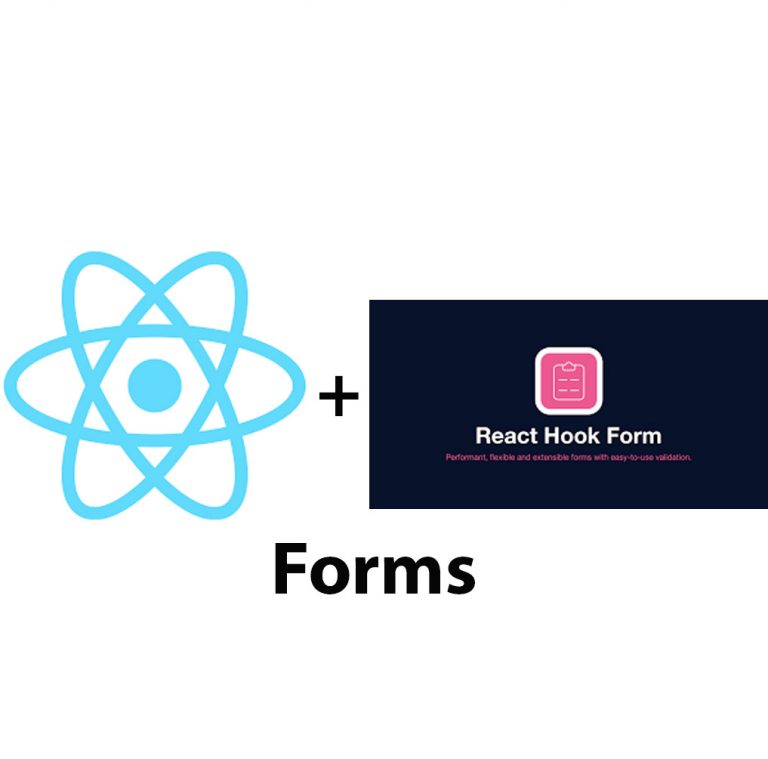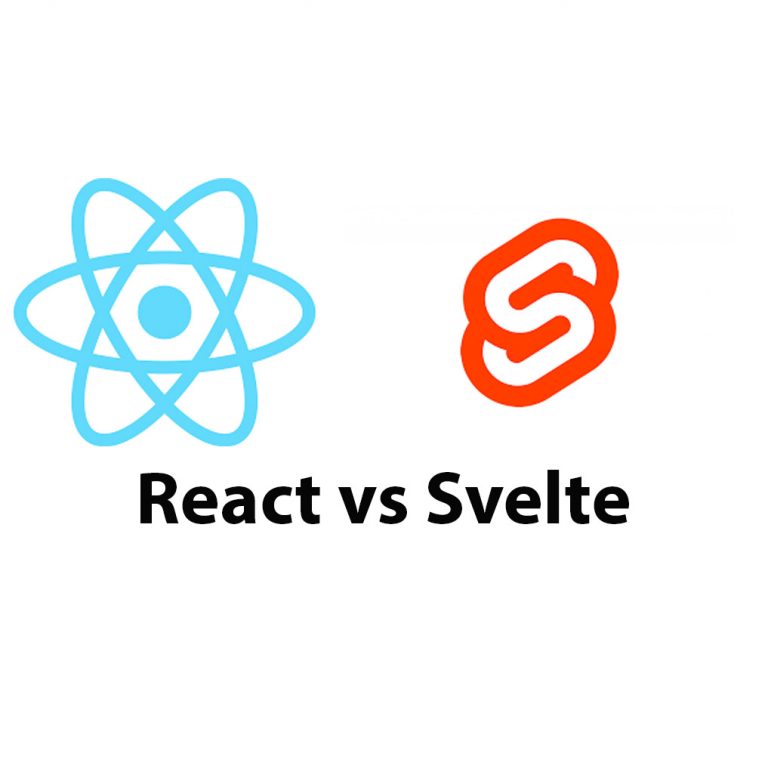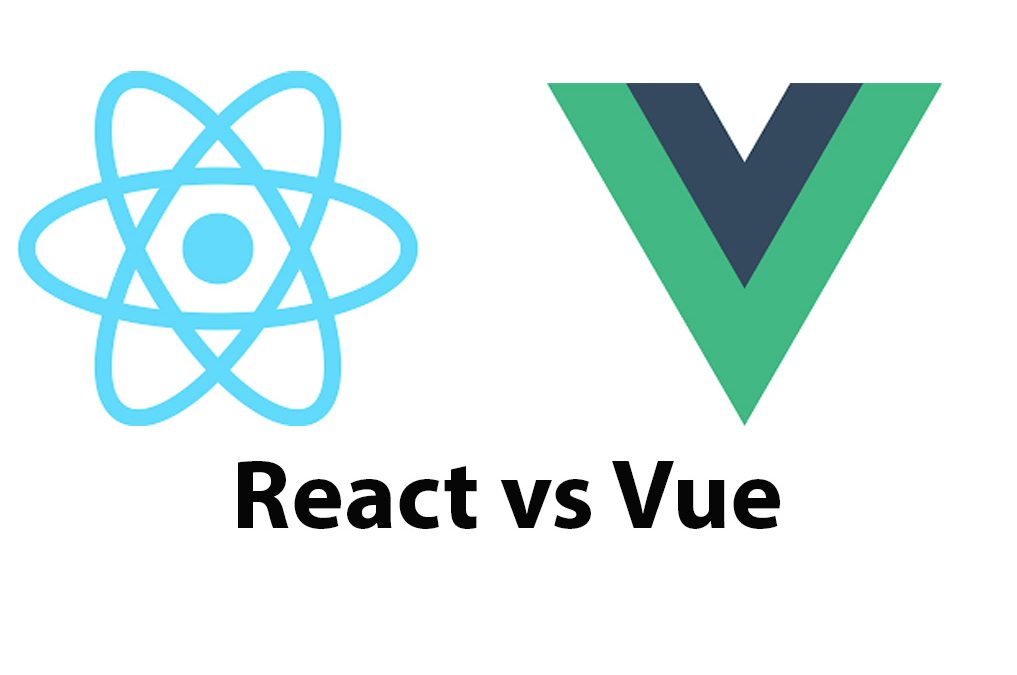Introduction
ReactJS and Vue are two of the most popular JavaScript libraries used to develop dynamic user interfaces. These libraries have gained widespread popularity due to their flexibility, efficiency, and ease of use. ReactJS was developed by Facebook, and Vue was created by Evan You.
In this article, we are going to evaluate and compare ReactJS and Vue. We will be looking at their advantages, disadvantages, and how they stack up against each other in terms of performance, learning curves, ecosystem, community support, and scalability.
ReactJS
What is ReactJS?
ReactJS is a JavaScript library that focuses on building reusable user interface components. It is an open-source library, maintained by Facebook, and was first released in 2013. ReactJS allows the creation of rich, interactive, and dynamic web applications.
Advantages of ReactJS
- Virtual DOM
ReactJS’s Virtual DOM is one of its biggest advantages. It is a lightweight and fast representation of the document object model (DOM) that ReactJS uses to update the UI when changes are made, without reloading the entire page. This reduces the time it takes to render and re-render the webpage and makes it more efficient.
- Reusable Components
ReactJS’s component-based structure is one of the reasons it is widely used. ReactJS allows developers to create reusable components. This means that developers can create a component, design it once, and then reuse it across the project, saving time and effort.
- Easier Debugging
ReactJS makes it easier to debug applications because it provides tools that allow developers to identify where problems are in their code. The React Developer Tools uses the Chrome Developer Tools as a base, added a number of useful features, including the ability to visualize the component hierarchy of the application.
Disadvantages of ReactJS
- Steep Learning Curve
ReactJS has a steep learning curve, especially for people who are new to JavaScript programming. It requires an understanding of the Virtual DOM and how it works, as well as the standard JavaScript syntax and React-specific syntax. This could take a considerable amount of time, especially if you are new to the language.
- JSX Syntax can be Complex
ReactJS’s syntax, which is called JSX, can be complex and hard to understand. JSX is an extension of standard JavaScript that allows you to write HTML-like syntax. While this can make it easier to create dynamic UI, it can also be confusing.
- Only the View Layer
ReactJS is only suitable for the view layer of web applications. It doesn’t handle the whole frontend architecture, unlike several other frameworks like Angular. This means that you need to use other libraries and tools to create a complete web application.
Vue
What is Vue?
Vue is an open-source Javascript framework for building user interfaces. It was created by Evan You in 2014. Vue is modeled after other JavaScript frameworks such as ReactJS and AngularJS.
Advantages of Vue
- Simple Syntax
Vue’s syntax is simpler and easier to understand when compared to ReactJS. Vue’s templatelike syntax aids developers to write more expressive code with fewer syntactic rules to remember.
- Easy-to-learn
Vue’s documentation and API are written in a way that people can quickly grasp its concepts and be productive in no time. Vue’s CLI (command line interface) allows developers to easily create a new project using templates, add or modify plugins, and other configurations without much hassle.
- Two Way Data Binding
Vue’s two-way data binding makes it a lot easier for developers to automate the flow of data between a component and the UI of an application. The two-way data binding feature also makes it easier for developers to keep track of data changes and use them as necessary to improve the performance of their application.
Disadvantages of Vue
- Smaller Community
Vue has been growing in popularity steadily, but it still lags behind ReactJS in terms of the size of the community and resources available. This can be a challenge for developers who need help or resources, as there may not be a sufficient amount of documentation or support for Vue-specific problems that they encounter.
- Limited resources
Although there are plenty of resources available for Vue, including official documentation, tutorials, and videos, they are not as comprehensive as those available for ReactJS. This makes it challenging for developers to find the right answers or solutions to difficult problems.
- Not widely used
While the adoption of Vue has increased in recent years, it is still not as widely used as other frameworks like ReactJS. This can be a challenge for developers who want to collaborate, learn, or share knowledge with other developers in the field.
Comparison
Performance
When it comes to performance, both ReactJS and Vue are excellent. They utilize a virtual DOM that helps to minimize the number of changes rendered on the screen. ReactJS uses the Flux architecture that manages unidirectional data-flow. This makes ReactJS more consistent than Vue when dealing with complex components. Vue, on the other hand, applies a set of optimizations that track the input and output of a component to reduce render cycles. Vue’s optimizations make it an excellent choice for simple components.
Code Organization:
React is known for its simplicity. The organization of the code is straightforward, with everything contained within components. This makes it easy to understand and maintain the codebase. React has only one way of doing things, which makes it easier for developers to collaborate.
React also has a robust ecosystem of libraries and tools. This makes it easier to build complex applications and integrate with other technologies.
Vue is known for its flexibility. The organization of the code is simple and easy to understand. Vue provides options for organizing your code based on your preferences. The code is organized into components, just like React. Vue also has a single-file component system, which makes it easy to write and maintain code.
Vue has a smaller ecosystem compared to React. This means that there may be less support for integrating with other technologies.
Learning Curve
Vue has a simpler syntax and easier-to-understand structure than ReactJS, making it easier to learn for newbies. Vue’s ability to operate as a more modular framework also enhances its learning curve, making it easy for developers to learn the framework’s essential concepts in a concise time.
ReactJS, on the other hand, has a steeper learning curve because it uses a separate language, JSX, that takes some time to learn. ReactJS also has a more significant ecosystem, which means learning its various libraries and tools can take more time.
Ecosystem
ReactJS has a vast ecosystem, consisting of thousands of third-party libraries and tools that help developers solve various complex problems. Its popular state management library, React-redux, provides an excellent way to coordinate data flow between ReactJS components.
Vue’s ecosystem is limited compared to React, but it continues to grow steadily. Even though Vue lacks a significant ecosystem, it has some helpful components that help interface with third-party libraries and tools.
Community Support
ReactJS has a more vibrant community that provides developers with support via forums, tutorials, and other resources, including third-party libraries and plugins. ReactJS’s vibrant community can be attributed to the fact that it was developed by Facebook, making it an excellent choice for businesses that have an existing Facebook technology stack.
Vue’s community is smaller than ReactJS’s, but it is a growing community that is continuously developing. Although Vue’s community is smaller than ReactJS’s, it is still very active and is supported by several contributors that provide excellent libraries and plugins.
Scalability
ReactJS and Vue are both scalable frameworks that support component-based architecture and manage application states. ReactJS uses the flux architecture that helps to manage an application’s state while Vue supports its own state management library, Vuex.
ReactJS’s scalability can be attributed to its ability to compose components, making it very easy to create large-scale applications. Vue, on the other hand, lacks a standardized way of managing responses and information sharing between components, which can make it difficult to scale an application.
Data Binding Comparison
Data binding is a crucial aspect of web development, which enables developers to create dynamic and interactive web applications. React and Vue are two popular JavaScript frameworks that offer different approaches to data binding. In this comparison, we will explore the key differences between data binding in React and Vue.
React is a declarative JavaScript library, which allows developers to build reusable UI components that represent the state of the application. React follows a unidirectional data flow pattern, where the data flows from the parent component to the child components. In React, data binding is achieved using props and state. Props are used to pass data from the parent component to the child components, while state is used to manage the state of the component and trigger re-rendering.
Vue, on the other hand, is a progressive JavaScript framework, which is designed to be incrementally adoptable. Vue follows a bidirectional data flow pattern, where the data flows from the component to the view, and vice versa. Vue’s data binding system is based on a reactive paradigm, which allows developers to create reactive and dynamic user interfaces. In Vue, data binding is achieved using properties, computed properties, and watchers.
Props and properties
Props in React and properties in Vue are used for passing data from the parent component to the child components. Props in React are read-only, which means they cannot be modified by the child components. When the parent component updates the props, React triggers a re-rendering of the child components.
In Vue, properties are reactive and can be modified by the child components. Vue uses a virtual DOM to track changes to the properties and updates the view accordingly. Vue’s data binding system offers two types of properties: props and data. Props are used for passing data from the parent component to the child components, while data is used for managing the state of the component.
Computed properties and state
Computed properties in Vue and state in React are used for managing the state of the component. Computed properties in Vue are used for creating derived data, which can be calculated based on other properties. Computed properties in Vue are cached, which means that they are only recalculated when the dependent properties are changed.
In React, state is used for managing the state of the component. When the state of the component changes, React triggers a re-rendering of the component. React also offers a way to calculate derived data using the render method, which can be used to calculate dynamic data based on the state of the component.
Watchers and lifecycle methods
Watchers in Vue and lifecycle methods in React are used for performing actions based on changes in the component. Watchers in Vue are used to watch a property and perform an action when the property is changed. Watchers in Vue are useful for performing asynchronous operations such as calling an API or updating a server-side resource.
In React, lifecycle methods are used for performing actions based on changes in the component. React offers several lifecycle methods such as componentDidMount, componentDidUpdate, and componentWillUnmount. These methods are useful for handling component initialization, updating component state, and cleaning up resources.
Data binding Performance
Performance is an important factor to consider when choosing a data binding system. React’s unidirectional data flow pattern and the use of virtual DOM ensure that React offers high performance and efficient rendering of components. React’s virtual DOM updates only the changed parts of the component, which results in faster rendering and better performance.
Vue’s reactive paradigm also ensures that Vue offers high performance and efficient rendering of components. Vue’s reactive system tracks changes to the properties and updates the view accordingly. Vue’s reactive system offers better performance than other data binding systems, as it avoids unnecessary rendering and updates.
Conclusion
In conclusion, React and Vue offer different approaches to data binding, with React’s unidirectional data flow and virtual DOM and Vue’s reactive paradigm. React’s props and state offer a simple and efficient way to manage the state of the component, while Vue’s properties and computed properties offer flexibility and reactive updates. React’s lifecycle methods offer a simple way to handle component initialization and update, while Vue’s watchers offer a way to perform asynchronous operations. Performance-wise, both React and Vue offer efficient rendering and updates, with React’s virtual DOM and Vue’s reactive system offering optimal performance. Ultimately, the choice between React and Vue depends on the specific requirements of the project and the personal preferences of the developer.
State management Comparison
State management is an important aspect of modern-day web development, and it helps developers to manage application states efficiently. In the world of web development, there are many popular technologies and frameworks that are used by developers across the globe to build robust, scalable, and high-performance web applications. Two of the most popular front-end web development frameworks are React and Vue. Both of these frameworks offer state management solutions that cater to the needs of their respective users. In this comparison, we will take a closer look at state management in React vs. state management in Vue.
React
React is a JavaScript library that is used to build user interfaces. React mainly focuses on the View part of the Model-View-Controller (MVC) architecture, and it is commonly used with other libraries or frameworks that handle the Model and Controller parts. React uses a virtual DOM (Document Object Model) to render UI components efficiently. It also offers an efficient way of handling application states using a feature called ‘React State.’
React State is a local state management solution that allows developers to manage state within a component. This means that each component can have its own state, and each state can be managed independently. React State is useful when you want to keep track of the state of a particular component, such as the value of an input field, the selected option in a dropdown, or the visibility of a component.
React State makes use of the ‘useState’ hook that was introduced in React 16.8. The ‘useState’ hook is a function that takes an initial state value and returns an array that contains the current state and a function to update the state. This function is commonly known as the ‘setState’ function.
The following code snippet shows how to use the ‘useState’ hook in React:
import React, { useState } from 'react';
function App() {
const [count, setCount] = useState(0);
const incrementCount = () => {
setCount(count + 1);
};
return (
<div>
<h1>{count}</h1>
<button onClick={incrementCount}>Increment</button>
</div>
);
}
export default App;In the above code, the ‘useState’ hook is used to create a state variable called ‘count’ with an initial value of 0. The ‘setCount’ function is used to update the value of ‘count’ whenever the button is clicked. When the button is clicked, the ‘incrementCount’ function is called, which updates the value of ‘count.’
React State is beneficial in that it offers a simple way of managing application states at the component level. However, it can become difficult to manage when the application grows and becomes more complex. When the application grows, it becomes challenging to manage state at the component level, and it can lead to state duplication and inconsistency.
To overcome this challenge, developers commonly use a more advanced state management solution called Redux.
Redux is a state management library that is commonly used with React. It offers a way of managing state globally rather than at the component level. Redux allows developers to keep track of the state of their application in a single centralized location called ‘store.’ The store contains the entire state of the application and can be accessed by any component in the application.
Vue
Vue is another popular JavaScript framework that is used to build user interfaces. Vue offers a simple yet powerful way of managing application states using a built-in feature called ‘Vue State Management.’
Vue State Management is similar to React State in that it allows developers to manage state within a component. However, Vue State Management offers a more advanced way of managing state using a feature called ‘Vuex.’
Vuex is a state management library that is built specifically for Vue applications. It offers a way of managing state globally rather than at the component level. Vuex allows developers to keep track of the state of their application in a single centralized location called ‘store.’ The store contains the entire state of the application and can be accessed by any component in the application.
The following code snippet shows how to use Vuex in a Vue application:
import Vuex from 'vuex';
import Vue from 'vue';
Vue.use(Vuex);
export default new Vuex.Store({
state: {
count: 0,
},
mutations: {
increment(state) {
state.count++;
},
decrement(state) {
state.count--;
},
},
actions: {
incrementAsync({ commit }) {
setTimeout(() => {
commit('increment');
}, 1000);
},
},
getters: {
getCount(state) {
return state.count;
},
},
});In the above code, the Vuex store is created with an initial state value of 0. The ‘mutations’ section contains functions that update the state value. The ‘actions’ section contains functions that perform asynchronous operations, such as API calls. The ‘getters’ section contains functions that return computed values based on the current state.
Vuex provides developers with a more advanced way of managing state in Vue applications. Vuex allows developers to manage state globally rather than at the component level, making it easier to manage and maintain state as the application grows.
State Management Conclusion
In conclusion, state management is an essential aspect of web development, and both React and Vue offer solutions to manage state within their respective applications. React offers a simple way of managing state within a component using React State. However, as the application grows, it becomes challenging to manage state at the component level, and developers commonly use a more advanced state management solution called Redux.
Vue, on the other hand, offers a simple yet powerful way of managing state within a component using Vue State Management. Vue State Management provides developers with access to Vuex, a state management library built specifically for Vue applications. Vuex offers developers a more advanced way of managing state globally, making it easier to manage and maintain state as the application grows.
Ultimately, whether to use React or Vue for state management depends on various factors, such as the size and complexity of the application, the developer’s experience, and the development team’s preferences. Both React and Vue offer robust and efficient state management solutions, and the choice between the two frameworks ultimately comes down to the project’s specific needs.
UI Components Comparison
When it comes to building web applications, developers usually have to choose between two popular frontend libraries – React and Vue. Both libraries offer various features and components for building interactive user interfaces. But which one is better when it comes to UI components? In this article, we’ll compare UI components in React vs UI components in Vue to help you make an informed decision.
React UI Components:
React is a JavaScript library that allows developers to build dynamic and interactive user interfaces using reusable UI components. React is developed and maintained by Facebook and it’s one of the most popular JavaScript libraries in the world.
React focuses on the “view” part of the MVC (Model-View-Controller) architecture and uses a virtual DOM (Document Object Model) to update the UI efficiently. React is known for its simplicity and its ability to handle large and complex applications. React’s UI components are reusable and composable, which makes them easy to maintain and scale.
React UI components are designed to be flexible and customizable. React offers a wide range of UI components, from simple buttons and forms to complex data visualizations. React components can be easily extended and customized to match specific design requirements. React also provides a rich set of APIs for manipulating DOM elements, which makes it easy to integrate third-party libraries and frameworks.
React UI components are written in JavaScript, which means that they can be easily tested using various tools and frameworks. React’s testing library (react-testing-library) provides a set of APIs for testing React components, and other testing frameworks like Jest and Enzyme can also be used to test React applications.
React UI components have a few limitations as well. For example, React components don’t provide any built-in support for animations or transitions, which means that developers have to use additional libraries or write custom code to add animations to their applications. React’s learning curve can be steep for new developers due to its complex architecture and heavy reliance on JavaScript.
Vue UI Components:
Vue is a progressive JavaScript framework for building user interfaces. Vue is developed and maintained by Evan You, and it’s known for its simplicity, flexibility, and excellent documentation.
Vue follows a component-based approach to building user interfaces, similar to React. Vue components are reusable and composable, and they can be easily integrated into any JavaScript application. Vue’s components are designed to be intuitive, and they provide a rich set of APIs for manipulating the UI.
Vue is lightweight and performs well, even in large and complex applications. Vue’s virtual DOM is also highly optimized, which makes it efficient in updating the UI. Vue components are designed to be easily customizable, and Vue provides a wide range of UI components, from simple forms and input fields to complex charts and data visualizations.
Vue provides built-in support for animations and transitions, which makes it easy for developers to add dynamic effects to their applications. Vue’s animation system is based on CSS transitions and animations, which makes it familiar to web developers. Vue also provides a rich set of APIs for integrating third-party animation libraries and frameworks.
Like React, Vue’s components are written in JavaScript, which makes them easy to test using various tools and frameworks. Vue’s testing library (vue-test-utils) provides a set of APIs for testing Vue components. Other testing frameworks like Jest and Enzyme can also be used to test Vue applications.
Vue has a few limitations as well. Vue’s component-based approach can be confusing for developers who are used to traditional MVC frameworks. Vue’s documentation can be overwhelming for new developers due to its extensive coverage of various features and concepts.
Comparison:
Now that we’ve looked at UI components in React and Vue individually, let’s compare them based on some key parameters:
- Reusability:
Both React and Vue provide reusable UI components that can be easily integrated into any JavaScript application. React’s components are designed to be flexible and customizable, and they can be easily extended to match specific design requirements. Vue’s components are intuitive and highly customizable, and they provide a rich set of APIs for manipulating the UI.
- Performance:
Both React and Vue are known for their performance and scalability. React uses a virtual DOM to efficiently update the UI, which makes it fast even in large applications. Vue’s virtual DOM is also highly optimized, and it performs well even in complex applications.
- Customizability:
Both React and Vue provide a wide range of UI components that are designed to be easily customizable. React’s components can be easily extended and customized to match specific design requirements. Vue’s components are highly intuitive and provide a rich set of APIs for manipulating the UI.
- Testing:
Both React and Vue components are written in JavaScript, which makes them easy to test using various tools and frameworks. React provides a testing library (react-testing-library) for testing React components, while Vue provides a testing library (vue-test-utils) for testing Vue components. Both libraries also support other popular testing frameworks like Jest and Enzyme.
- Animations and Transitions:
Vue provides built-in support for animations and transitions, while React does not provide any built-in support. React developers have to rely on additional libraries or write custom code to add animations to their applications. Vue’s animation system is based on CSS transitions and animations, which makes it familiar to web developers.
UI Components Conclusion:
Both React and Vue provide a rich set of UI components that are designed to be reusable, performant, and highly customizable. React’s components are flexible and customizable, and they provide a wide range of APIs for manipulating the UI. Vue’s components are intuitive and highly customizable, and they provide built-in support for animations and transitions. Both React and Vue components are written in JavaScript, which makes them easy to test using various tools and frameworks.
Ultimately, the choice between React and Vue depends on the specific requirements of your application and your team’s skill set. React is a great choice for complex and large applications that require a high degree of flexibility and customizability. Vue is a great choice for smaller and medium-sized applications that require ease of use and built-in support for animations and transitions.
Conclusion
In conclusion, ReactJS and Vue are both excellent JavaScript frameworks for developing user interfaces. They each have their advantages and disadvantages in terms of syntax, performance, learning curve, ecosystem, community support, and scalability.
ReactJS is best suited for building complex applications with a more significant user base because of its large ecosystem and the active community that supports it. Vue, on the other hand, is well suited for building small to mid-size applications that require moderate performance with a smaller community.
Ultimately, the choice of the framework to use depends on the needs of the project and the experience of the development team. Developers need to be mindful of the strengths and weaknesses of each framework while keeping their specific needs in mind when choosing a JavaScript library to use.

React Charts With ChartJS 2
As a web developer, I understand the importance of data visualization in presenting complex information in an understandable and visually appealing way. That’s why I’ve been using ChartJS 2, a powerful JavaScript library, for creating charts in my React apps. In this article, I’ll show you how to set up and use ChartJS 2 in […]

Create A Login Form In React
Creating a login form with React is an essential component in web development that can be accomplished in a few simple steps. In this article, we will walk through the process of creating a login form with React and explore its benefits. Before we begin, let’s take a moment to understand React. React is a […]

Create Forms In React Using React Hook Form
Introduction React Hook Form is a popular tool used in building forms in React.js. It is a performant library that simplifies the process of building forms by reducing boilerplate code and providing convenient features. This article is aimed at introducing the basic concepts of React Hook Form and how to use it to create forms […]

React JS vs Svelte
Introduction In the world of web development, there are many frameworks available for use. Two of the most popular frameworks are React JS and Svelte. React JS is an open-source JavaScript library developed by Facebook while Svelte is a relatively new framework developed by Rich Harris in 2016. In this article, we will compare React […]

Lifecycle Hooks in React JS – Introduction
React JS is one of the most popular front-end frameworks used by developers worldwide. It offers great flexibility and reusability because of its component-based architecture. A component in React is an independent and reusable piece of UI, and it can be thought of as a function of state and props. React provides lifecycle hooks that […]

React JS Interview Questions (and answers)
Introduction: React is a powerful JavaScript library with a growing presence in web development today. With its powerful rendering capabilities and cross-functional library, it has become an important skill for developers to learn. In order to prepare for React interviews, it is important to familiarize yourself with React interview questions, which cover a range of […]

